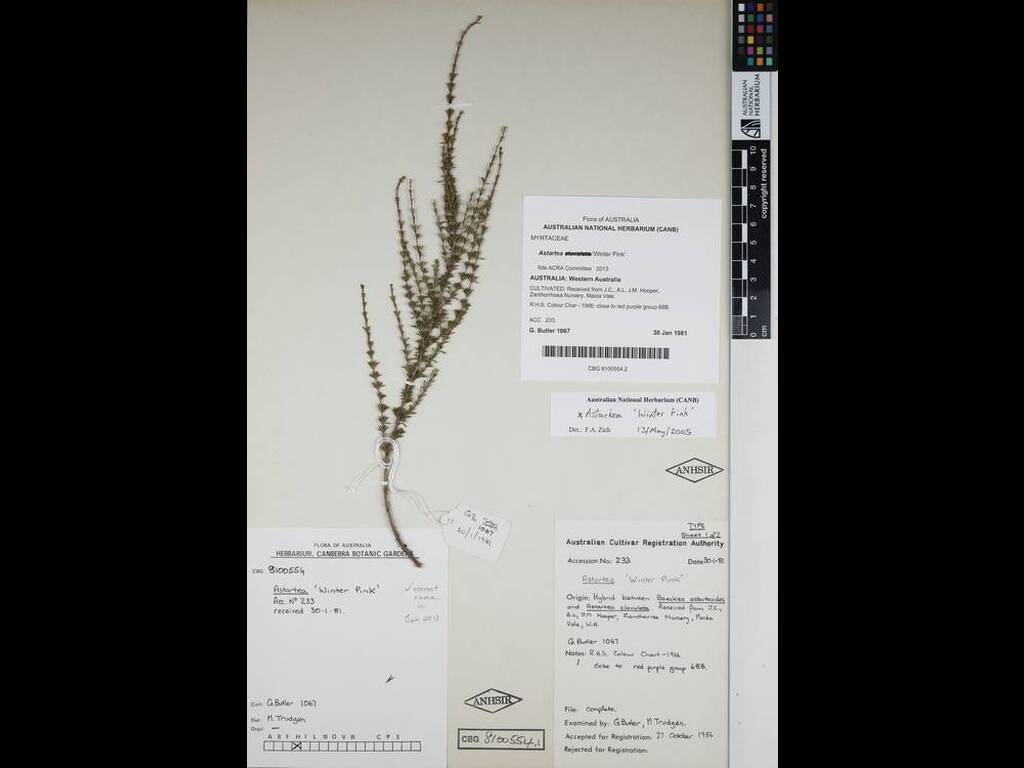Astartea 'Winter Pink'
- File Number
- 233
- ACRA Field Book Number
- 489
- Registration Date
- 26/10/1986
- Application Received
- 01/01/1981
- Family
- Myrtaceae
- Cultivar Name
- Astartea 'Winter Pink'
- Origin
- Astartea 'Winter Pink' is a hybrid between Astartea clavulata and Astartea astarteoides that arose in cultivation early in 1976 at Zanthorrea Nursery, Maida Vale, Western Australia. (At the time, Astartea astarteoides was known as Baeckea astarteoides, giving rise to the awkward inter-generic form of the synonym name). Twelve seedlings thought to be hybrids were transplanted and grown to maturity from which one dark flowered form was selected for registration. The cultivar was first received by the Authority in January 1981. Registration applied for by A L Hooper of Zanthorrea Nursery, PO Box 240, Kalamunda, Western Australia. Formerly known as xAstackea 'Winter Pink'
- Characteristics
- This cultivar grows into a dense shrub 0.6m tall by 0.7m wide. The leaves are around 4mm long and are whorled around the stem. The flowers are around 10mm diameter and deep pink in colour. They are found from April to October. The flowers are around 10mm in diameter. DIAGNOSIS: Astartea astarteoides Flowers: Pink Size: 5mm Season: Sept-Nov Branches: slightly pendulous Leaves: whorled Astartea clavulata Flowers: white Size: 10mm Season: June-Nov Branches: erect Leaves: whorled Astartea 'Winter Pink' Flowers: deep pink Size: 10mm Season: April-Oct Leaves: whorled
- Cultivation
- The hybrid nature of this cultivar was confirmed by M. Trudgen who is reviewing its nomenclatural status. The cultivar has grown well in improved, well-drained soils in Canberra, though when planted in heavier soils growth performance has been disappointing. The plant is relatively frost hardy, with some tip damage in evidence after severe frost. Drought tolerance has not been properly tested. Propagation must be by vegetative means to preserve the cultivar form.
- Publication
- Payne, W.H. (1989), Garden Cultivars of Australian Plants. Australian Plants 15(121): 199
- Colour Coding
- RHS Colour Chart 1966.petals: close to red purple group 68B.
- Propagation
- Cuttings from semi-firm new growth
- Applicant Name
- A.L.Hooper
- Uses
- As part of a shrubbery, or as a feature plant or in display pots.
- Availability
- Specialist native plant nurseries
- ANBG Accession Numbers
- ACC233; ACRA489; CBG9012138.
- NSL ID
- -

